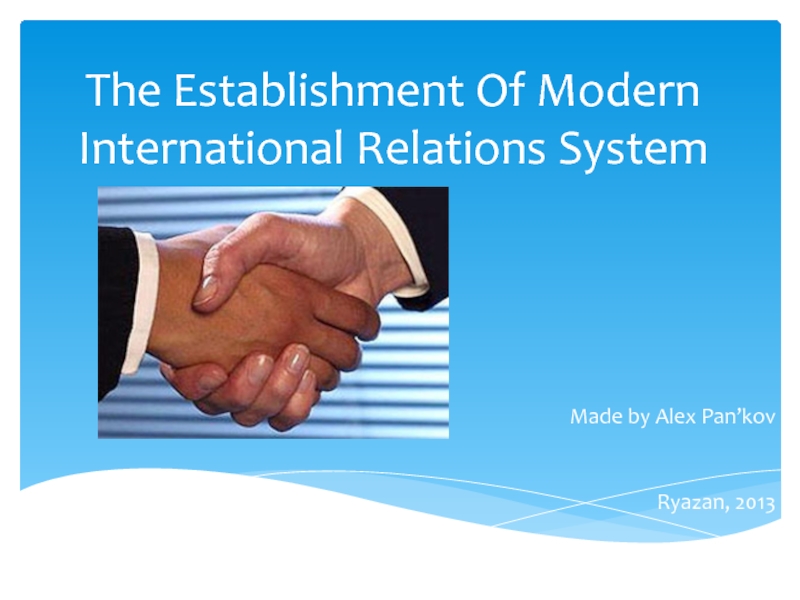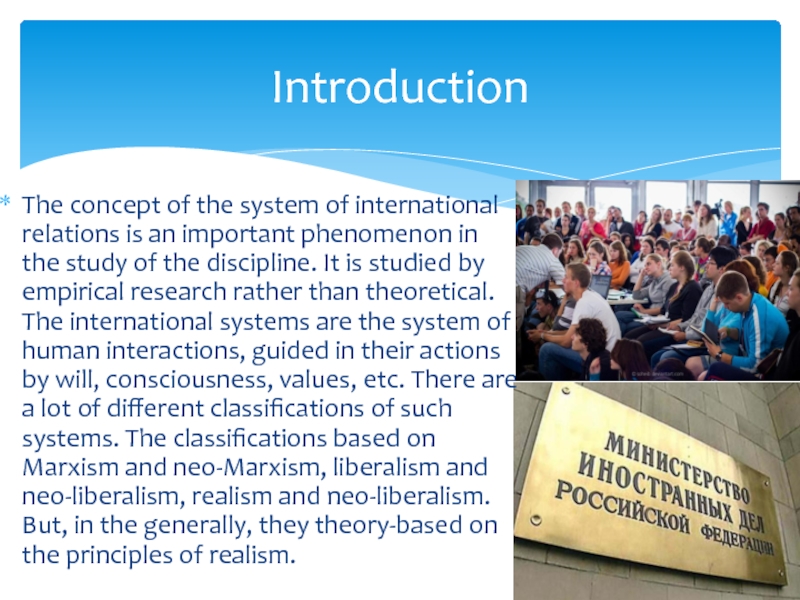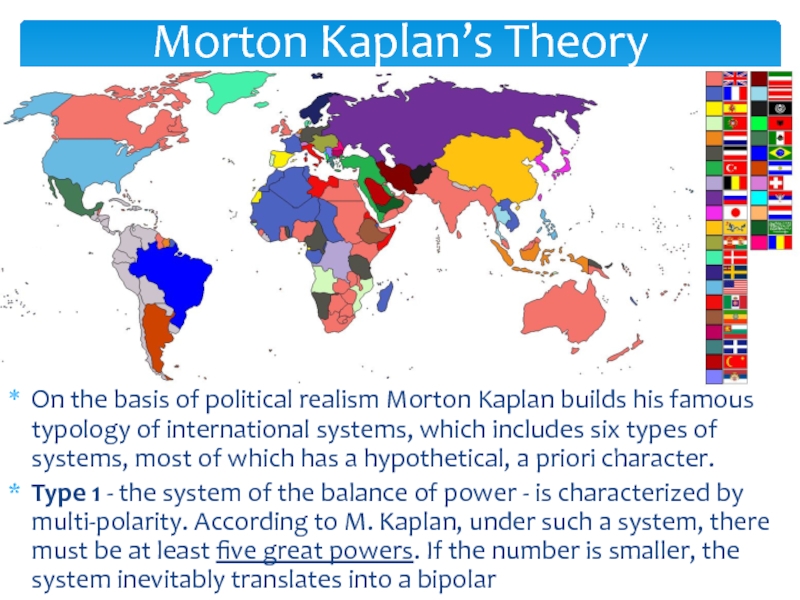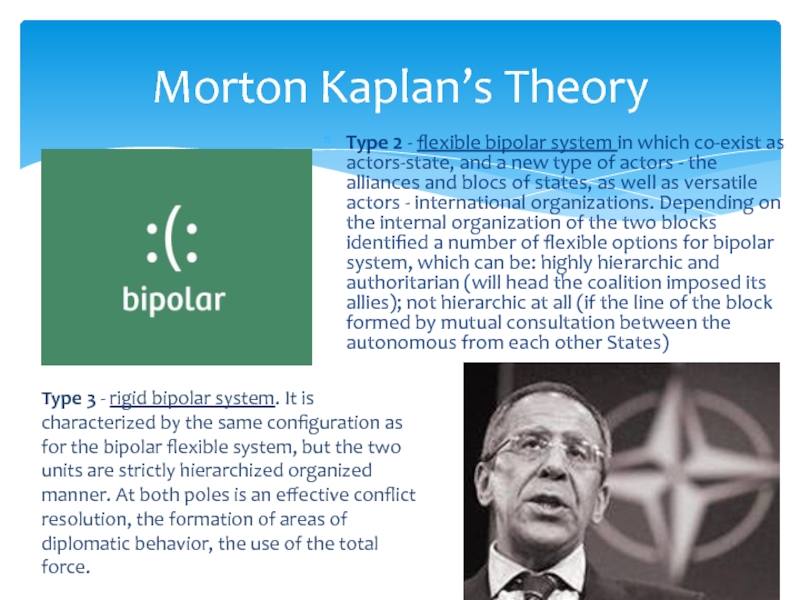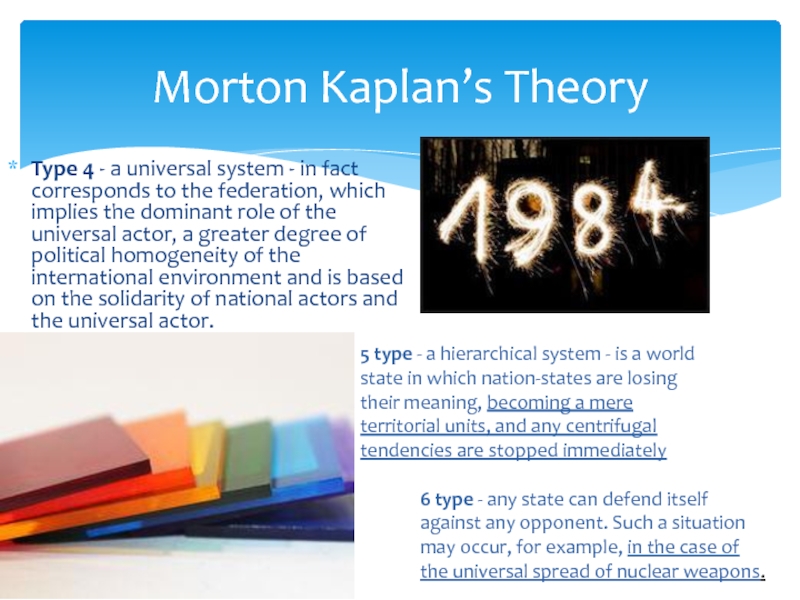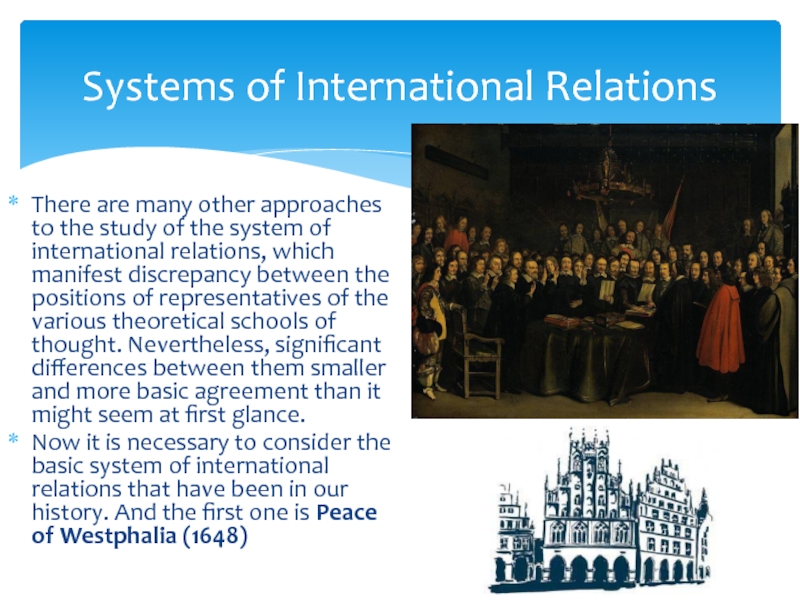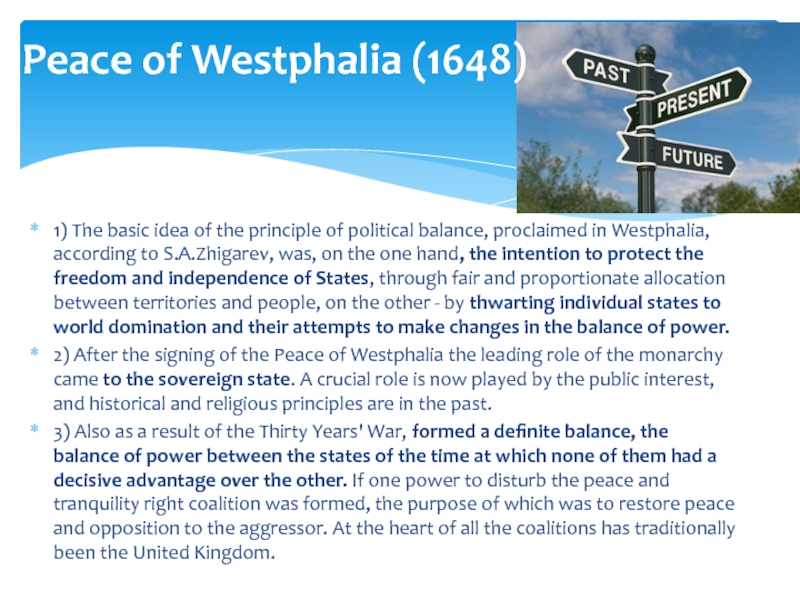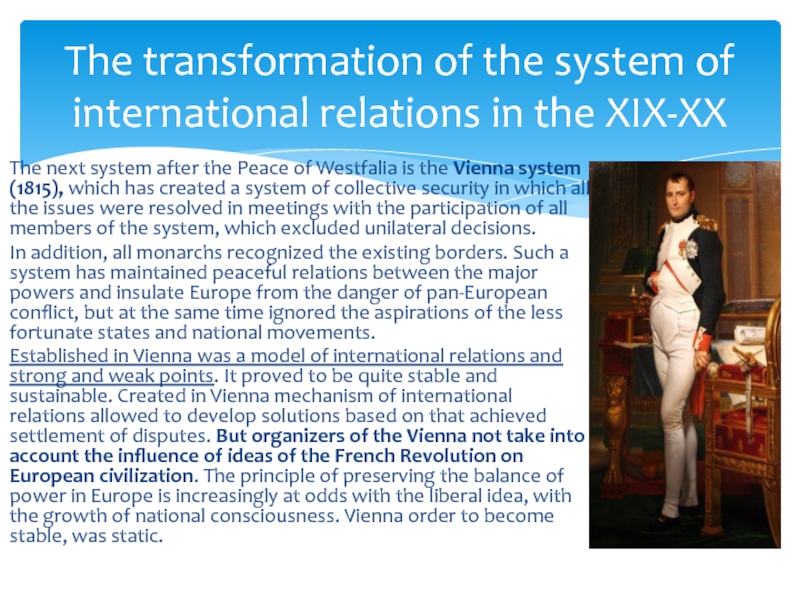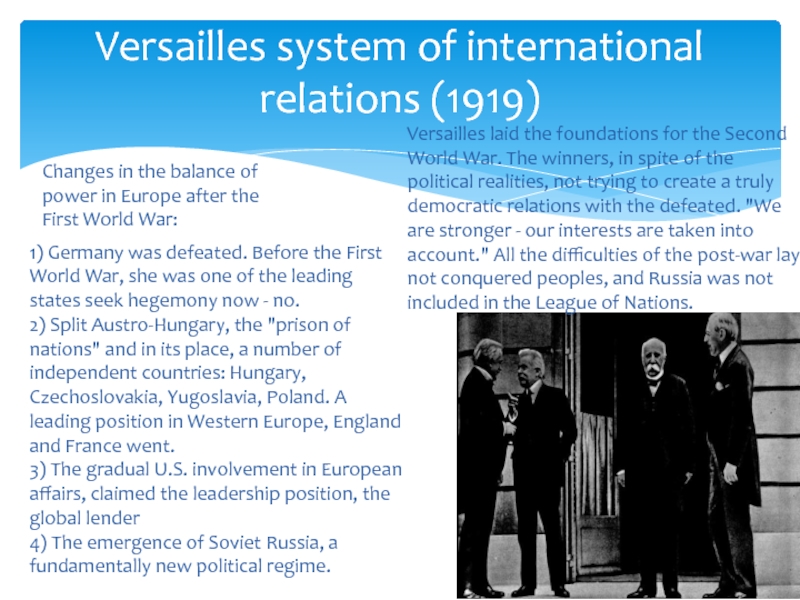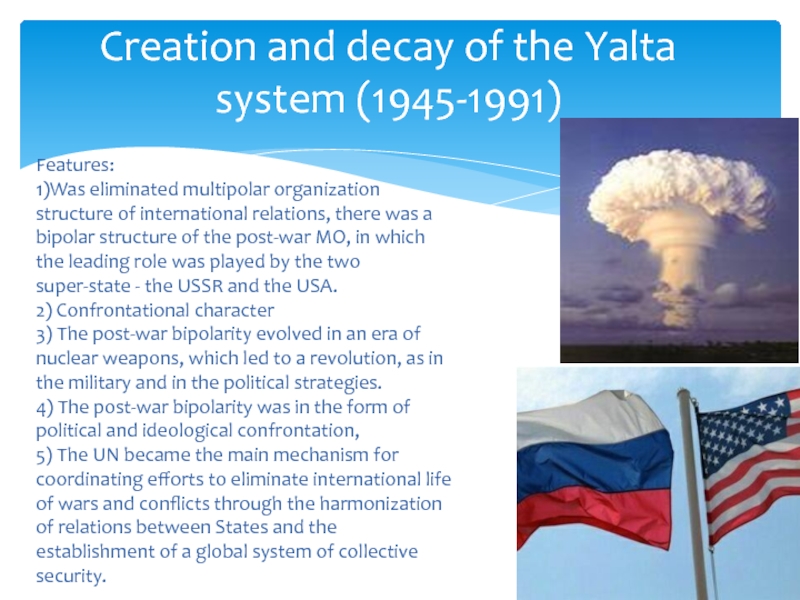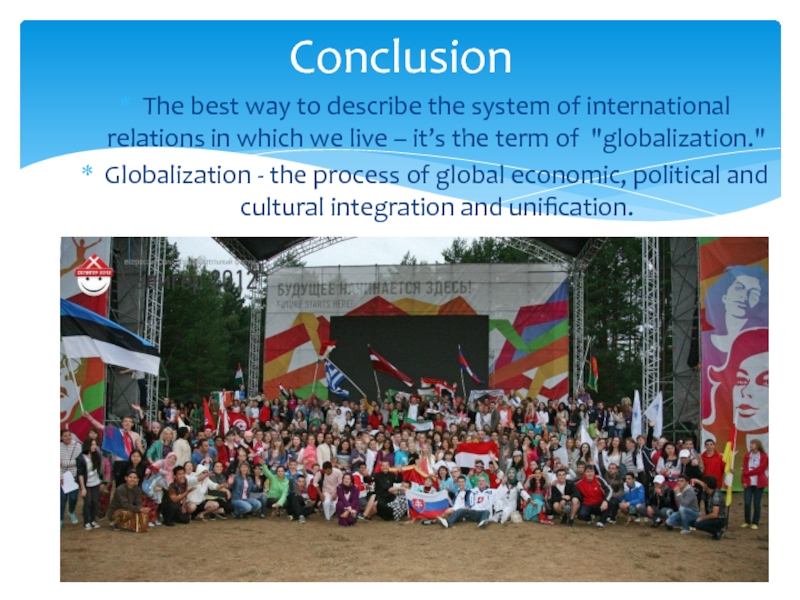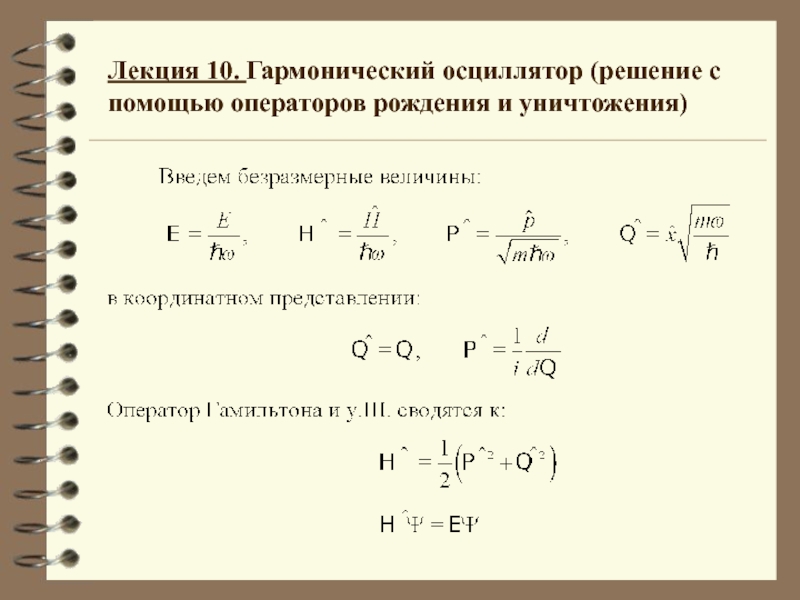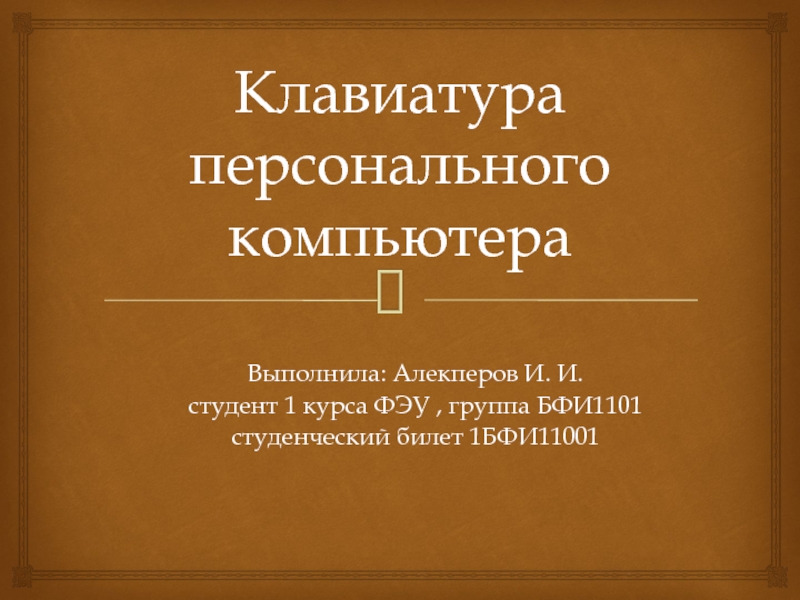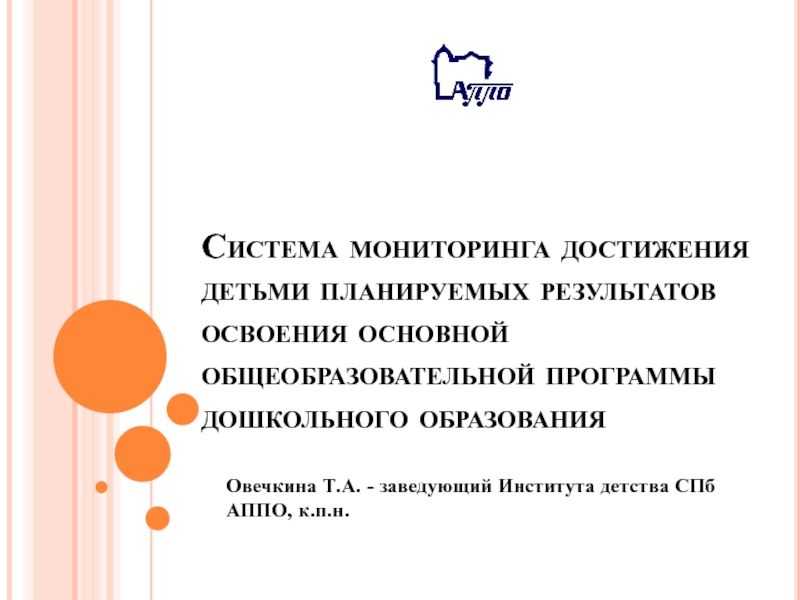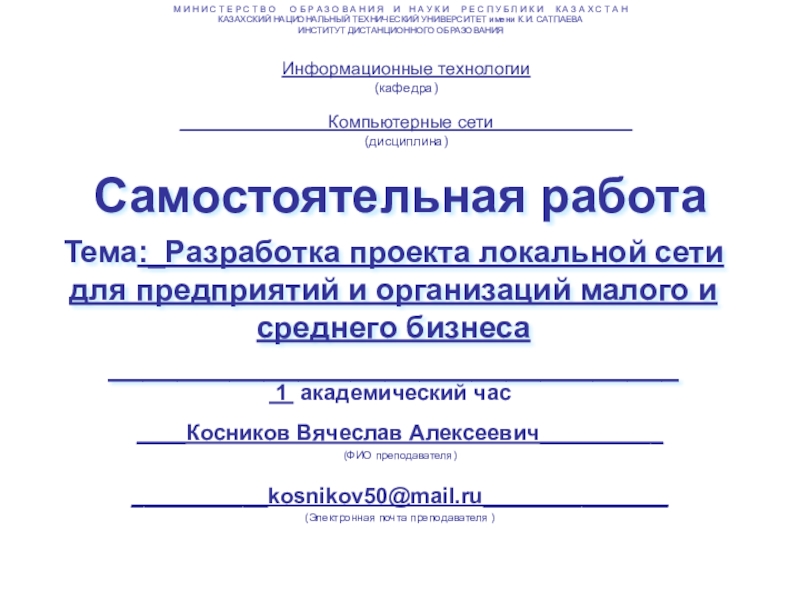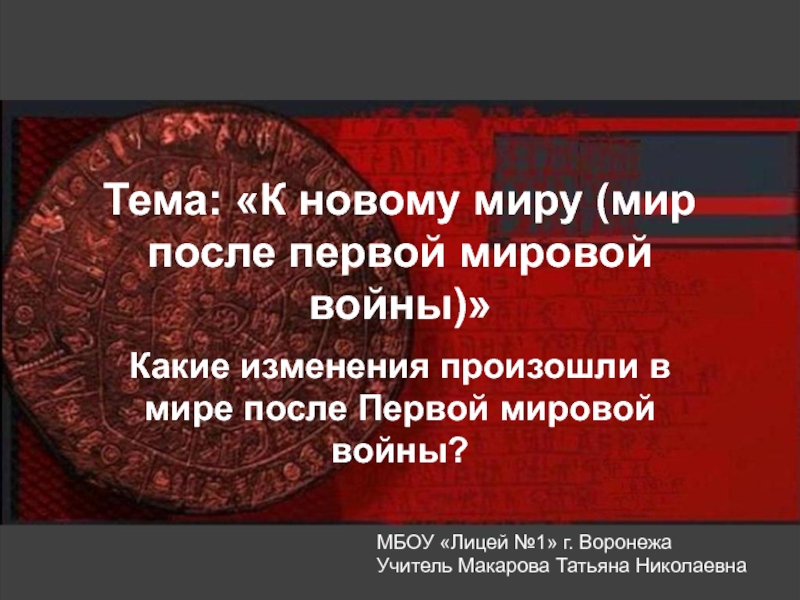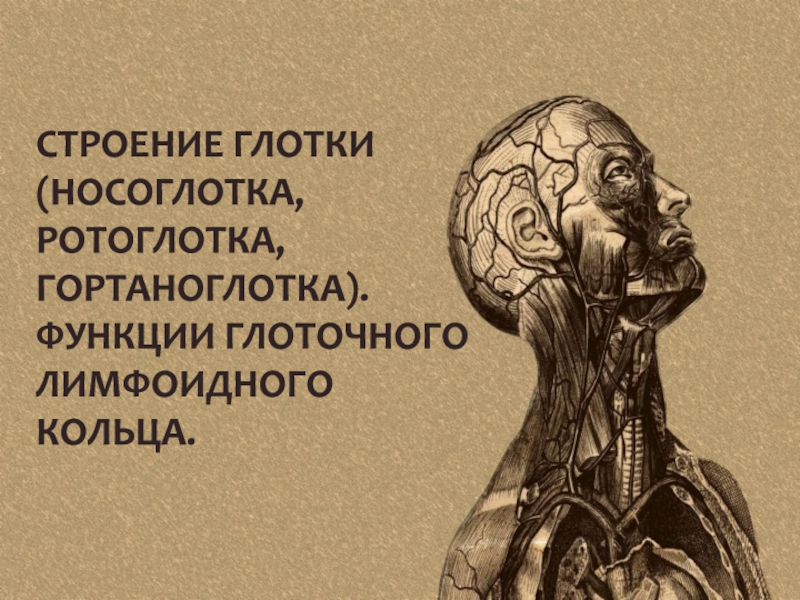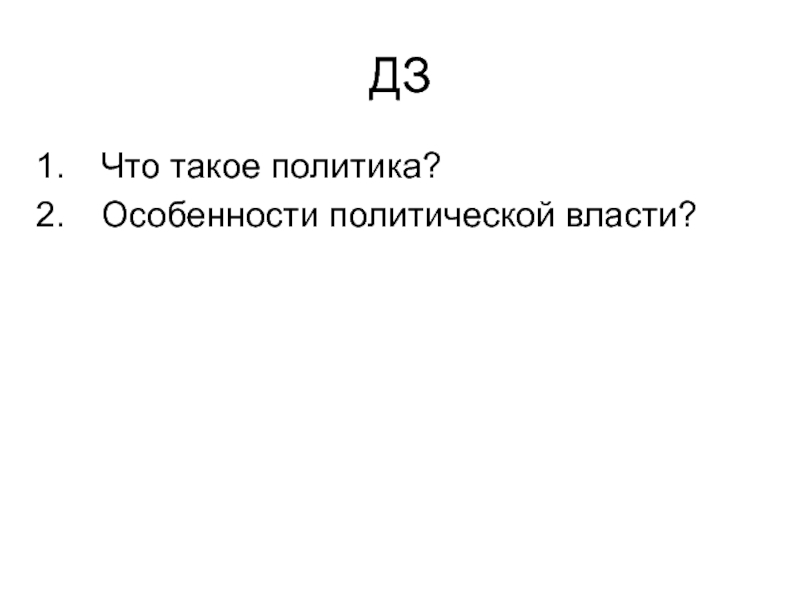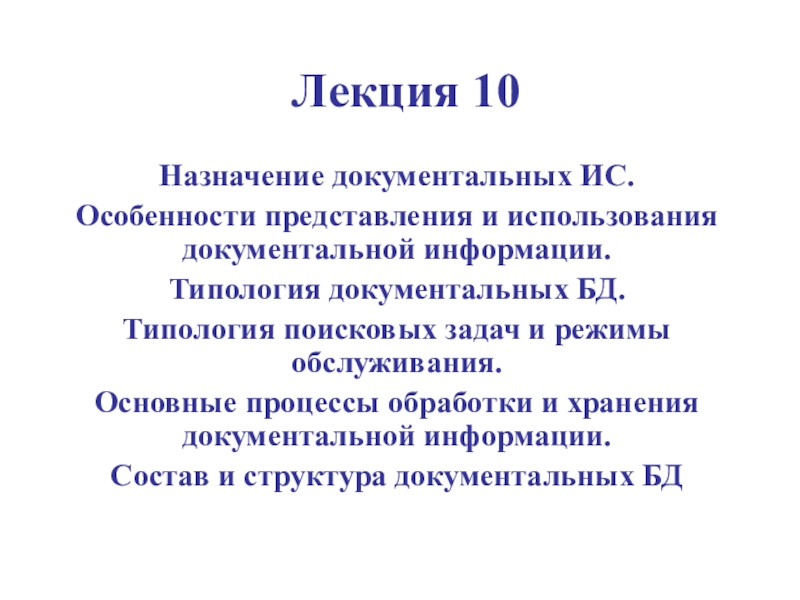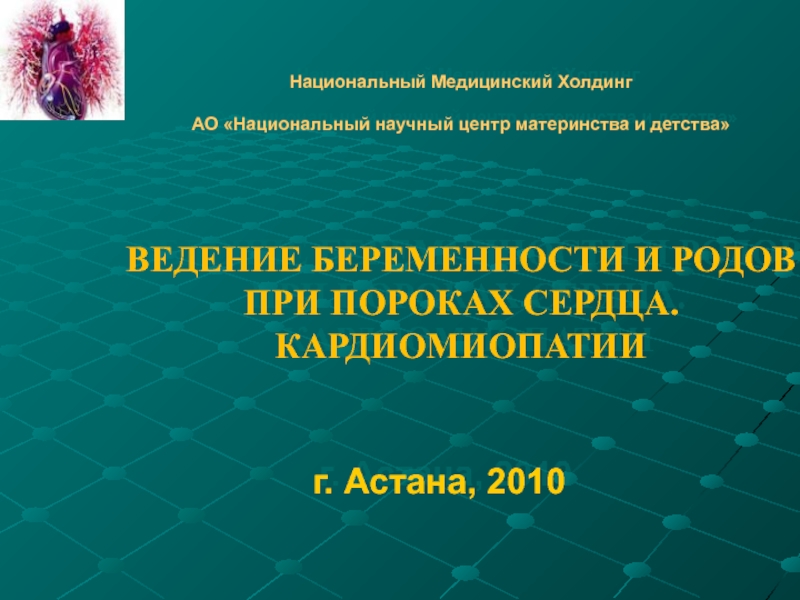Разделы презентаций
- Разное
- Английский язык
- Астрономия
- Алгебра
- Биология
- География
- Геометрия
- Детские презентации
- Информатика
- История
- Литература
- Математика
- Медицина
- Менеджмент
- Музыка
- МХК
- Немецкий язык
- ОБЖ
- Обществознание
- Окружающий мир
- Педагогика
- Русский язык
- Технология
- Физика
- Философия
- Химия
- Шаблоны, картинки для презентаций
- Экология
- Экономика
- Юриспруденция
The Establishment Of Modern International Relations System
Содержание
- 1. The Establishment Of Modern International Relations System
- 2. The concept of the system of international
- 3. On the basis of political realism Morton
- 4. Type 2 - flexible bipolar system in
- 5. Type 4 - a universal system -
- 6. There are many other approaches to the
- 7. 1) The basic idea of the principle
- 8. The next system after the Peace of
- 9. Versailles system of international relations (1919)Versailles laid
- 10. Creation and decay of the Yalta system
- 11. The best way to describe the system
- 12. Скачать презентанцию
Слайды и текст этой презентации
Слайд 2The concept of the system of international relations is an
important phenomenon in the study of the discipline. It is
studied by empirical research rather than theoretical. The international systems are the system of human interactions, guided in their actions by will, consciousness, values, etc. There are a lot of different classifications of such systems. The classifications based on Marxism and neo-Marxism, liberalism and neo-liberalism, realism and neo-liberalism. But, in the generally, they theory-based on the principles of realism.Introduction
Слайд 3On the basis of political realism Morton Kaplan builds his
famous typology of international systems, which includes six types of
systems, most of which has a hypothetical, a priori character.Type 1 - the system of the balance of power - is characterized by multi-polarity. According to M. Kaplan, under such a system, there must be at least five great powers. If the number is smaller, the system inevitably translates into a bipolar
Morton Kaplan’s Theory
Слайд 4Type 2 - flexible bipolar system in which co-exist as
actors-state, and a new type of actors - the alliances
and blocs of states, as well as versatile actors - international organizations. Depending on the internal organization of the two blocks identified a number of flexible options for bipolar system, which can be: highly hierarchic and authoritarian (will head the coalition imposed its allies); not hierarchic at all (if the line of the block formed by mutual consultation between the autonomous from each other States)Morton Kaplan’s Theory
Type 3 - rigid bipolar system. It is characterized by the same configuration as for the bipolar flexible system, but the two units are strictly hierarchized organized manner. At both poles is an effective conflict resolution, the formation of areas of diplomatic behavior, the use of the total force.
Слайд 5Type 4 - a universal system - in fact corresponds
to the federation, which implies the dominant role of the
universal actor, a greater degree of political homogeneity of the international environment and is based on the solidarity of national actors and the universal actor.Morton Kaplan’s Theory
5 type - a hierarchical system - is a world state in which nation-states are losing their meaning, becoming a mere territorial units, and any centrifugal tendencies are stopped immediately
6 type - any state can defend itself against any opponent. Such a situation may occur, for example, in the case of the universal spread of nuclear weapons.
Слайд 6There are many other approaches to the study of the
system of international relations, which manifest discrepancy between the positions
of representatives of the various theoretical schools of thought. Nevertheless, significant differences between them smaller and more basic agreement than it might seem at first glance.Now it is necessary to consider the basic system of international relations that have been in our history. And the first one is Peace of Westphalia (1648)
Systems of International Relations
Слайд 71) The basic idea of the principle of political balance,
proclaimed in Westphalia, according to S.A.Zhigarev, was, on the one
hand, the intention to protect the freedom and independence of States, through fair and proportionate allocation between territories and people, on the other - by thwarting individual states to world domination and their attempts to make changes in the balance of power.2) After the signing of the Peace of Westphalia the leading role of the monarchy came to the sovereign state. A crucial role is now played by the public interest, and historical and religious principles are in the past.
3) Also as a result of the Thirty Years' War, formed a definite balance, the balance of power between the states of the time at which none of them had a decisive advantage over the other. If one power to disturb the peace and tranquility right coalition was formed, the purpose of which was to restore peace and opposition to the aggressor. At the heart of all the coalitions has traditionally been the United Kingdom.
Peace of Westphalia (1648)
Слайд 8The next system after the Peace of Westfalia is the
Vienna system (1815), which has created a system of collective
security in which all the issues were resolved in meetings with the participation of all members of the system, which excluded unilateral decisions.In addition, all monarchs recognized the existing borders. Such a system has maintained peaceful relations between the major powers and insulate Europe from the danger of pan-European conflict, but at the same time ignored the aspirations of the less fortunate states and national movements.
Established in Vienna was a model of international relations and strong and weak points. It proved to be quite stable and sustainable. Created in Vienna mechanism of international relations allowed to develop solutions based on that achieved settlement of disputes. But organizers of the Vienna not take into account the influence of ideas of the French Revolution on European civilization. The principle of preserving the balance of power in Europe is increasingly at odds with the liberal idea, with the growth of national consciousness. Vienna order to become stable, was static.
The transformation of the system of international relations in the XIX-XX
Слайд 9Versailles system of international relations (1919)
Versailles laid the foundations for
the Second World War. The winners, in spite of the
political realities, not trying to create a truly democratic relations with the defeated. "We are stronger - our interests are taken into account." All the difficulties of the post-war lay not conquered peoples, and Russia was not included in the League of Nations.Changes in the balance of power in Europe after the First World War:
1) Germany was defeated. Before the First World War, she was one of the leading states seek hegemony now - no.
2) Split Austro-Hungary, the "prison of nations" and in its place, a number of independent countries: Hungary, Czechoslovakia, Yugoslavia, Poland. A leading position in Western Europe, England and France went.
3) The gradual U.S. involvement in European affairs, claimed the leadership position, the global lender
4) The emergence of Soviet Russia, a fundamentally new political regime.
Слайд 10Creation and decay of the Yalta system (1945-1991)
Features:
1)Was eliminated multipolar
organization structure of international relations, there was a bipolar structure
of the post-war MO, in which the leading role was played by the two super-state - the USSR and the USA.2) Confrontational character
3) The post-war bipolarity evolved in an era of nuclear weapons, which led to a revolution, as in the military and in the political strategies.
4) The post-war bipolarity was in the form of political and ideological confrontation,
5) The UN became the main mechanism for coordinating efforts to eliminate international life of wars and conflicts through the harmonization of relations between States and the establishment of a global system of collective security.
Слайд 11The best way to describe the system of international relations
in which we live – it’s the term of "globalization."
Globalization
- the process of global economic, political and cultural integration and unification.Conclusion
